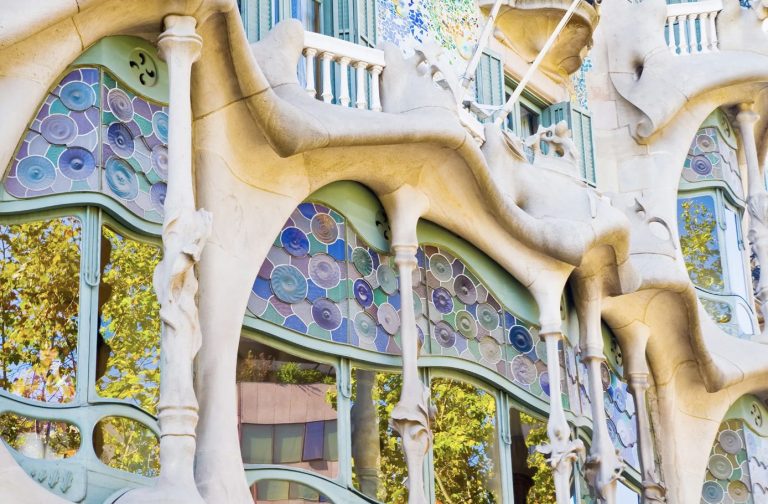Euretina attendees able to spend some time away from the conference centre during their trip to Barcelona have an abundance of attractions to choose from. Regardless of whether one’s primary interest is to enjoy art, architecture, history, or just some time outdoors, there is much to see and do. Here is a list of some of the top attractions in Barcelona.
Basilica de la Sagrada Familia
Considered the iconic symbol of Barcelona, this magnificent church in the Eixample neighborhood combines Gothic and Modernista elements. Originally designed by Gaudi, the construction was not completed at the time of his death in 1926 and continues today.
Sant Pau Recinto Modernista
Physicians might be particularly fascinated by this UNESCO World Heritage Site that was a hospital/medical complex designed in 1901 and was a fully functioning hospital into the 21st century. Reached after a relatively short walk heading northeast from Sagrada Familia along the tree-lined Avinguda de Gaudi, the Art Nouveau buildings and grounds cover approximately nine city blocks and include a library, park areas, and gardens intended for patient enjoyment.
Palau de la Música Catalana
Designed by Lluís Domènech i Montaner and opened in 1908, this architectural masterpiece in the Ribera district is noted for its stained glass skylight in the main concert hall, ceramics, statues, and wrought iron décor.
Parc Güell
Designed by Gaudi, this magnificent public park is located in the Gracia neighborhood. Visitors may be familiar with its serpentine bench made of broken bits of ceramic. Within the park, Casa-Museu Gaudi, Gaudi’s former home, is a museum displaying a host of Gaudi memorabilia.
Historic residences
Palau Güell
This residence, which is located in the El Raval neighborhood, was only the second commission for Antoni Gaudi. Visitors to the mansion will see the Gaudi’s talent particularly showcased in the roof design and the rooms below ground level.
Historic residences
Casa Amatilier, Casa Batilio, Casa Vicens, Casa Milia
Sightseers wanting to tour multiple residential Modernista buildings within close proximity to each other can do so by visiting these sites that are located along the Passeig de Gracia in the Eixample. Casa Amatilier was designed by Josep Puig i Cadalfach while Gaudi was the architect for the other three buildings.
Art museums
Museu Picasso, located in the El Born district, consists of five buildings. The collection contains much of Picasso’s early work along with a group of painted ceramics donated by the artist’s widow in the 1980s.
Montjuic is the location for the Fundació Joan Miró and the Museum Nacional d’Art de Catalunya (MNAC). Visitors to the Miró museum can enjoy both the works of the Barcelona native along with a magnificent view of the city from outside the building. MNAC is particularly renowned for its installation of medieval frescoes. A trip to the MNAC roof offers another splendid view.
City strolls
Barri Gòtic, the Gothic Quarter, covers the area going east from La Rambla to Via Laietana and from the waterfront north to Plaça de Catalunya. This neighborhood was the site for a large Jewish community from the 12th century until 1391 (El Call) and is the location for the Catedral de Barcelona, the city’s official cathedral. Be prepared to use your GPS when walking through the Barri Gòtic because it is easy to get lost in this neighborhood’s labyrinth of streets. This area also offers many opportunities for shopping.
Those lacking time to tour the Modernista mansions in L’Eixample can marvel at the exterior structural details by walking along Passeig de Gràcia. This avenue is also the home to many luxury stores.
La Rambla is a treelined pedestrian boulevard stretching for about 1.2 km from Plaça de Catalunya to the Mediterranean Sea. Wander through La Boqueria, Barcelona’s famous market, by entering off La Rambla.
























































































































